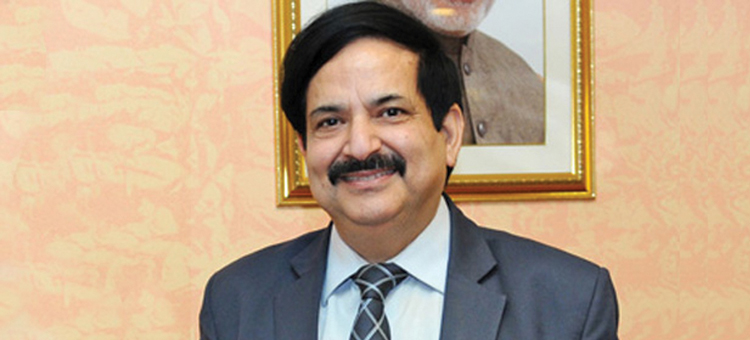Outbound travel from Asia and the Pacific region has reached new heights and has become a vital source market for the rest of the world. In 2016, the region contributed 317 million outbound travellers and generated almost 40 per cent of the world’s tourism expenditure.
However, it was the Chinese outbound tourist market that mainly propelled the tourism flows from the region. China has emerged as the world’s fastest-growing source market. According to UNWTO, 135 million people from China travelled outside their country in 2016, and the East Asian country became the world’s top spender in the global tourism sector.
Expenditure on account of outbound tourism from China increased from $24 billion in 2006 to $261 billion in 2016. Researchers believe that by 2022 the number of Chinese outbound tourists will be more than double the figures of 2016, signalling a revolutionary change in the global travel industry. The merging of China National Tourism Administration and the Ministry of Culture into a new Ministry of Tourism & Culture speaks volumes about China’s intent with regard to outbound travel.
The phenomenal growth in Chinese outbound travel began at the turn of the 21st century as the result of liberal policies, growth in the number of Chinese consumers, increase in their disposable incomes, diversification of consumer demands and palpable changes in the market. The consumption pattern of Chinese people are rapidly changing from ‘meeting everyday needs’ to ‘improving the quality of life’. More and more people are considering travel as an important component of their life.
Chinese tourists are becoming more sophisticated with increasingly diverse and individualised demands. Today, Chinese millennials constitute the bulk of Chinese outbound tourists and Free Independent Traveller (FIT) market. According to the United Nations World Tourism Organisation (UNWTO) study, Chinese millennials perceive travel as a source of enjoyment and an authentic life experience they love to share on social media as they are avid users of mobile applications and digital payment methods. FITs demand better travel conveniences and access. Therefore, the destinations that provide simplified visa regime and direct air connectivity are more attractive.
All major countries and destinations are eyeing the immense potential of Chinese outbound travel market. Hong Kong commands the highest share. Japan, Thailand and South Korea are some of the other preferred destinations of Chinese travellers. Other destinations include the US, Singapore, Taiwan, Canada, Australia and New Zealand.
India may not be among the top 10 countries visited by Chinese travellers, but China is among the top 10 source countries for India. It is heartening to know that China, which stood 11th amongst the top 15 source countries for inbound tourism into India in 2015, has moved up to 9th place in 2016. The number of tourists from China visiting India increased from 2,06,322 travellers in 2015 to 2,51,313 in 2016, registering a growth of almost 22 per cent. In the same year, when overall growth rate of FTAs to India was 10.8 over the previous year, the growth rate of travellers from China was more than double. One of the major reasons for this high growth was the decision of India and China to observe 2015 as ‘Visit India Year’ in China and 2016 as ‘Visit China Year’ in India.
During the ‘Visit India Year’, India Tourism organised various promotional activities to showcase and promote varied tourism products of India with the objective of attracting travellers from China. The promotional campaign included advertisement on the local print media and outdoor advertising, participation in travel fairs and exhibitions, organising ‘Know India’ seminars and workshops for Chinese tour operators in different cities, publications of brochures in Chinese language, joint promotion with tourism stakeholders and airlines, and invitation to media persons, opinion makers and tour operators to visit India.
Increasing tourist traffic between China and India is part of a multi-pronged strategy of the two countries to increase people-to-people contacts, exposing them to each other’s culture and subsequently strengthening the relationship between people. The increase in bilateral trade between the two countries and Chinese companies finding varied business interests in India will further help both the nations promote bilateral tourism.
There are indeed many more factors that can facilitate a rapid increase in Chinese tourists visiting India. According to the UNWTO, China’s outbound tourist numbers which were expected to touch 100 million by 2020 have already hit the mark. India today gets less than 0.2 per cent of the total outbound Chinese travellers. And hence, there is a huge scope for India to make a quantum jump in attracting Chinese travellers which would be a ‘game changer’ for India Tourism.
As of now, it is understandable that countries like Mauritius and even Sri Lanka may be receiving more Chinese tourists than India. But in the long run, India’s large market size and range of destinations that include 36 UNESCO® World Heritage sites, Buddhist trail, cultural destinations, heritage monuments and holiday destinations hold much greater potential. The sheer physical size and expanding tourism infrastructure will serve India better in welcoming such big volumes in the coming years.
This hope is also premised on the fact that during the last two years, India has registered a double-digit growth in inbound tourism. This is a clear indication that India is emerging as a major tourism destination with increased visibility, improved infrastructure and variety of attractions. China is a vast country and the outbound travel demand, spending power and consumer preference of Chinese tourists vary from region to region. Therefore, if India has to successfully penetrate the Chinese outbound travel market, it will require policies and strategies customised to the specific needs and preferences of Chinese travellers. These include:
- Formulating policies aimed at easy access, seamless travel, airline connectivity and smooth visa issuance
- Developing a long-term country plan with segmented market strategies and a wide range of themed products to target the needs of different consumers in China
- Promoting India destinations through local media channels, establishing an online presence in China’s media networks
- Ensuring that destinations are ‘China-ready’ with local services and infrastructure as per their needs and preferences
- Reinforcing presence of India in China by strengthening the India Tourism office, increasing airline outlets and having efficient destination management companies so as to reinforce the marketing and promotion efforts of the destinations
- Reassuring that safety and security measures are duly respected
India and China share historical travel links with each other. Fa-Hien, the famous Chinese pilgrim and a devout Buddhist, came to India in 399 AD and visited important destinations like Taxila, Patliputra, Nalanda, Kashi, Kosambi, Vaishali and Mathura. Hiuen Tsang, an ancient ambassador of peace, spent five years in the erstwhile University of Nalanda, and took with him manuscripts on Buddha and translated them into the Chinese language.
The historic ‘Silk Route’, the trade route which stretched from China to the Mediterranean, traversed through India. The travel links of the past between both the countries can become a strong foundation to take tourism to commanding heights. The bilateral relations between the two countries will further accelerate the ‘opening up’ of the two giant economies. Today, Chinese travellers are largely interested in travel segments like holidays, visiting friends and relatives, adventure, nature and culture. And India is capable of providing all of these.
In addition, the 36 World Heritage sites, the Buddhist trail, the spiritual circuit, luxury and hospitality, backwaters, beaches and the emerging medical and wellness tourism offerings can be strategically showcased to attract Chinese travellers to India. ITB China, a three-day B2B travel exhibition scheduled to be held from May 16 to 18, 2018 at Shanghai, is a golden opportunity for India Tourism and all stakeholders of the tourism industry to enhance India’s presence, improve networking and maximize business opportunities.
‘Visit India Year’ campaign of 2015 in China is a leading example of how strategic planning and integrated efforts by India resulted in increasing arrivals from China and it would be appropriate if this success story is replicated in future. An integrated approach for showcasing India is key to penetrating the Chinese outbound travel market in times to come.






